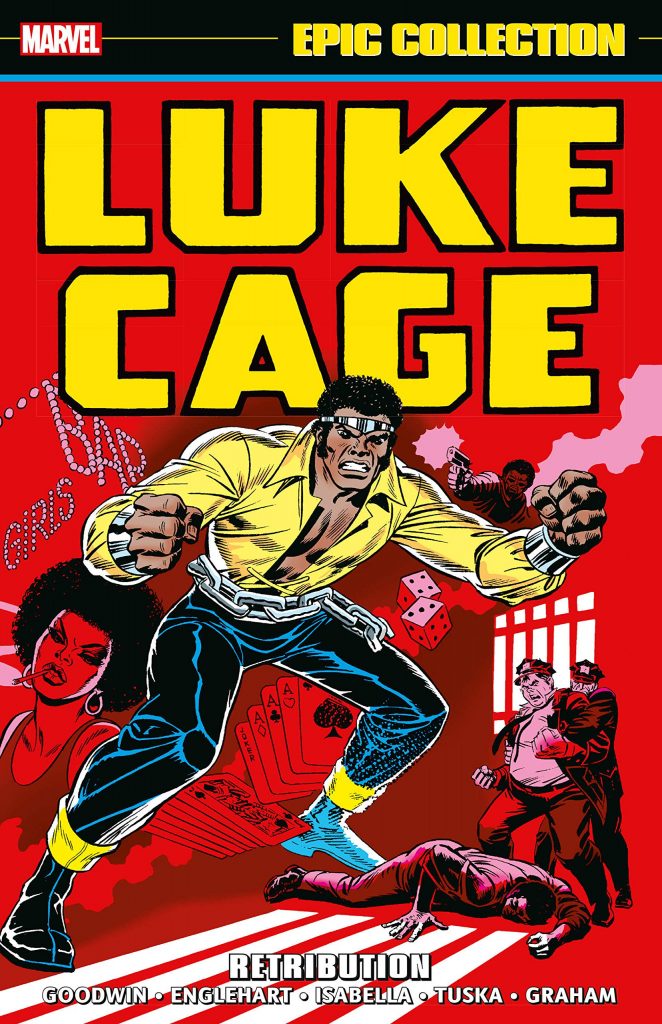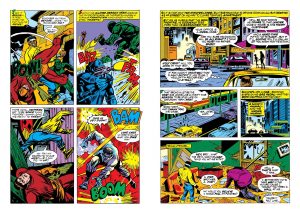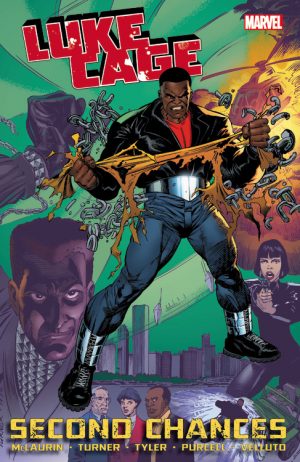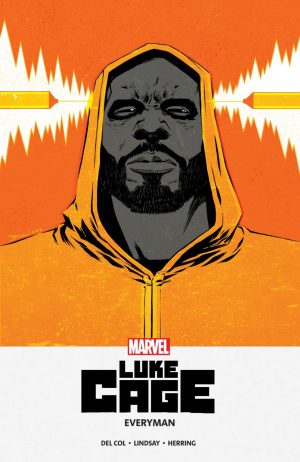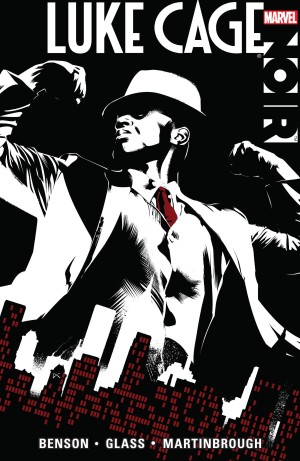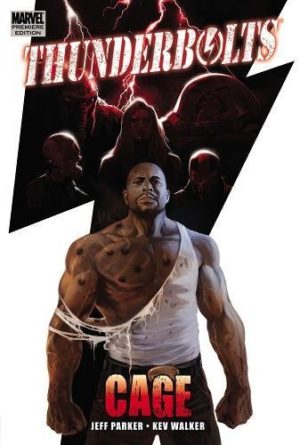Review by Frank Plowright
Luke Cage’s introduction and earliest adventures have already been reprinted in the Essential and Marvel Masterworks formats, and now we hit the Epic Collection. Unfortunately, no matter what the format, these still aren’t great stories.
The good intentions are more obvious right at the start, not just with Marvel introducing an African American superhero in his own title in 1972, but with a still very readable origin story supplied by Archie Goodwin taking his lead from the era’s blaxploitation movies. Jailed for a crime he didn’t commit, a prisoner only known as Lucas volunteers for an experiment that could earn him early parole. It’s sabotaged, but the unintended result is his ending up with steel hard skin and super strength. Deciding yellow is his colour, and a metal tiara is a good idea, he sets up shop in New York as a hero for hire, protecting the locals from Harlem’s thugs and gangsters. Unfortunately that’s as good as it gets in this collection.
Goodwin bails early and no other writer manages to approach his quality. Steve Englehart, then on one of his earliest assignments, recalls in Marvel: The Untold Story that penciller George Tuska would just not bother drawing any of the character scenes. It’s not absolute, but the evidence bears him out, and any spark of originality in his plots, like Luke heading to Latveria to collect a debt from Doctor Doom, is extinguished by Tuska putting in the minimum effort. Anything that looks good from Tuska past the opening half dozen stories is accident more than design.
By the time Tony Isabella takes over the writing Billy Graham is the artist. He’s nowhere near as technically skilled as Tuska, and responsible for some gruesome human distortions, but his pages are so much more interesting. There’s a greater energy, and you believe Luke Cage lives in a world with backgrounds, people and detail rather than Tuska’s generic land. After collaborating with Graham on the writing to begin with, Isabella takes Luke in a different direction, applying the more bombastic Power Man name, but there’s still little inspiration. The best of Isabella’s work here is the smackdown with the villain calling himself Power Man.
All writers provide a Luke that’s heroic, likeable and with a personality different enough to mark him out for reasons other than the colour of his skin, and that strength is invaluable. For all the misgivings about the quality, there was enough spirit here for the makers of the 2016 Luke Cage TV show to take oddities like Black Mariah and several villains named after snakes and make them work. By then Luke himself was already an iconic character, but unfortunately, the quality doesn’t trickle back to these earliest appearances.
